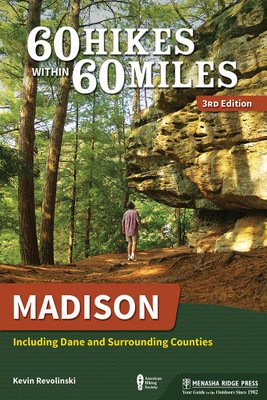Even the Rivers Are Laid Back: Rafting in Jamaica
Call it Huck Finn goes Caribbean. There are perhaps few other activities as soothing as floating down a lazy river, and the lush landscape of Jamaica provides the ideal setting for a raft trip. Various rivers curl down from the island’s mountains to the sea, passing through rich foliage burgeoning with exotic flowers and fruit trees.
This is not the adrenaline rush of whitewater rafting; these rivers are gentle and in some places quite shallow. Guides navigate rafts with long bamboo poles and provide the passenger with a colorful narrative for a colorful journey. It amounts to a mini-course in Jamaican flora and fauna with smatterings of history and what life is like far from the all-inclusive resorts along the coast. “It is an excellent way for travelers to see the interior beauty of the island without the exertion that hiking would demand,” says Jenny Crossling of Viator.com who finds rafting currently to be one of the island’s most popular excursions.
Originally, however, river rafting was anything but leisurely. In the 1870s plantation workers used the rafts to haul loads of bananas down the Rio Grande on the east coast to ships awaiting in Port Antonio. If you doubt the stability of the simple constructions be aware that they once balanced upwards of 600 pounds of bananas across their narrow decks.
But in the early twentieth century, tourism came to the island, drawn by the idyllic beaches and the Eden-like natural beauty of the interior. Hollywood heartthrob Errol Flynn fell in love with Jamaica and—perhaps seeking to model his off-screen life after the swashbuckling adventures of his films—discovered the adventure of rafting down the Rio Grande. He determined to share the experience with his friends and in the 1940s and 50s he hosted groups on various of his properties and set off for the river to have raft races.
The bananas no longer ride the currents but the tourists certainly do. Today travelers can follow the same path of Errol Flynn or venture down the Martha Brae, another popular site, located forty-five minutes east of Montego Bay near Falmouth. Some tours are as long as three hours and include lunch or beverages. Others last around forty-five minutes, a good option for cruise passengers who want to save some time for shopping or other activities. I got in touch with Jamaica Tours Ltd. and opted for a short ride on the Great River, just west of Mo’ Bay.
The second name of the river is Lethe, like the river of forgetting in Dante’s Divine Comedy, though the touch of the Jamaican tongue has made it sound like “lee-tee.” It’s an appropriate name for a place to forget your troubles and relax. My raft captain was Kenton Birch, a wiry, soft-spoken young man who lives in a small community not far from the putting-in point. He is part of a thirty-six-guide rotation that shows up daily at the riverside tour office to await turns for work.
Kenton, like the other guides, had built his own raft. They are constructed of one of the most abundant local materials: bamboo. “Bamboo is the fastest growing plant in Jamaica,” Kenton told me, “It grows as much as three inches per day.” I could see that even the bamboo of my raft was undaunted, sprouting green shoots along the edges. The ten thirty-foot logs were bound together quite simply but stably, and a cushioned seat was fastened atop a small platform that rose just a bit higher than the deck so that a travelers’ shoes would never be in danger of getting soaked. Often decorated with wild flowers, these rustic jungle thrones seat one or two people.
The rafts were all jammed together at the dock like a bad pile-up on the bamboo highway, but some quick and deft maneuvering by two of the guides freed Kenton’s. I stepped easily from the end of the dock, took my seat and leaned back for the ride.
We passed below a stone bridge—the largest of its kind on the island—which has been standing since 1828. Even Hurricane Ivan which had filled the twenty foot gap above us with flood waters back in 2004 wasn’t able to budge the structure nor was a 1979 flood that went over the top of it. Probably best to check the forecast before getting on the river in hurricane season, I thought.
Something along the shore attracted Kenton’s attention and he slowed the raft and pushed closer to the muddy bank. He hopped off with a wooden stake and a thin rope attached to the deck. He slipped the stake into the mud and disappeared into the thick papyrus reeds. I watched with a touch of apprehension as the entire raft rotated around that stake with the current. The rope pulled taut… and held, of course. Kenton returned a few seconds later, pulled up the stake and we were off again drifting through paradise.
He offered me a small round fruit. “Rose apple.” He bit into one and nodded to me to do the same. Slightly less sweet than a regular apple but a similar texture. “But don’t eat the seed.”
I looked up from where my teeth had exposed a pit the size of a marble. “Why not?”
“You’ll get a tree growing up out of your mouth!” His teeth flashed white as he leaned back and laughed. Though his job seems laid back and easy, the captain is responsible for getting his raft back up the river and this is the unseen challenge. He either pays someone or does it himself, so don’t forget that when determining your guide’s tip.
Birds are plentiful and their songs mingle with the gurgling of the waters. Egrets and various herons watched idly from the shallows before returning to their search for crawfish and insects as we slipped slowly past. Massive bunches of bamboo, no doubt the rafts of the future, rise up and bend outward like bouquets, their slender leaves giving an air-brushed quality to the landscape. Flowers and fruits are simply everywhere. Mangos are plentiful, pumpkin flowers and morning glories dapple the banks, and the occasional cocoa or breadfruit tree prompts a mini-lesson from the guide.
Sunshine is not a must. On cloudy days, the river takes on a mystical quality, and even a light sprinkle adds romantic charm—and it’s only then that you’d have to worry about your camera getting wet. Rafting excursions offer quite a contrast to the lively social activities in the towns and resorts as tour operators do their best to spread out rafters and to keep the experience personal and private. Only once did I see another soul on the river and that was a vendor perched atop a cooler on his bamboo raft reading the day’s newspaper. He looked up and smiled as we approached, and offered me the only thing that had been missing: “Red Stripe?”
___________________________________________
If You Go:
One of the finest all-inclusives on the islands is Sandals. One in Ocho Rios is not far from the famous Dunn’s River Falls. However, I prefer the south shore’s Sandals Whitehouse which seems more like a village planted along an immaculate beach. Just outside the hotel you’ll find crocodile tours and getting to the rivers for a lazy raft tour is an easy day trip.
Have a look at 5 of the Coolest Hotels in Jamaica





 ORDER YOUR COPY TODAY!
ORDER YOUR COPY TODAY! ORDER YOUR COPY TODAY!
ORDER YOUR COPY TODAY!
Pingback: Best Stays in Jamaica: Five of the Coolest Hotels on the Island
Pingback: Travel Photo of the Week: Lime Cay, Kingston, Jamaica
Great information! Is this an activity that I can easily do one afternoon while in Montego Bay? I’m really pressed for time and need to head to Ochos Rios. Is there booking information anywhere online?
Thanks,
Brian